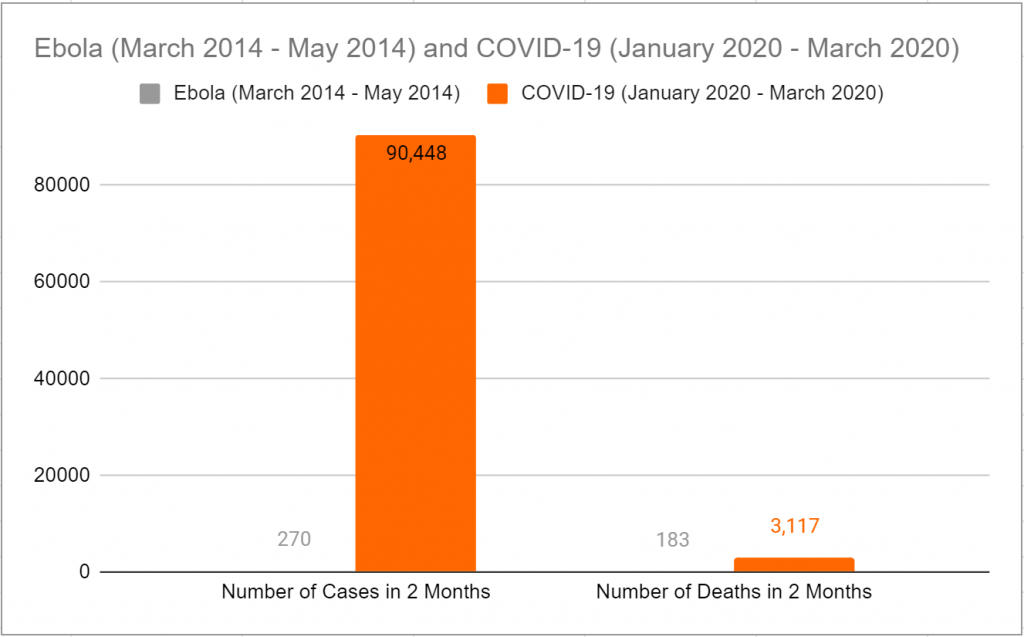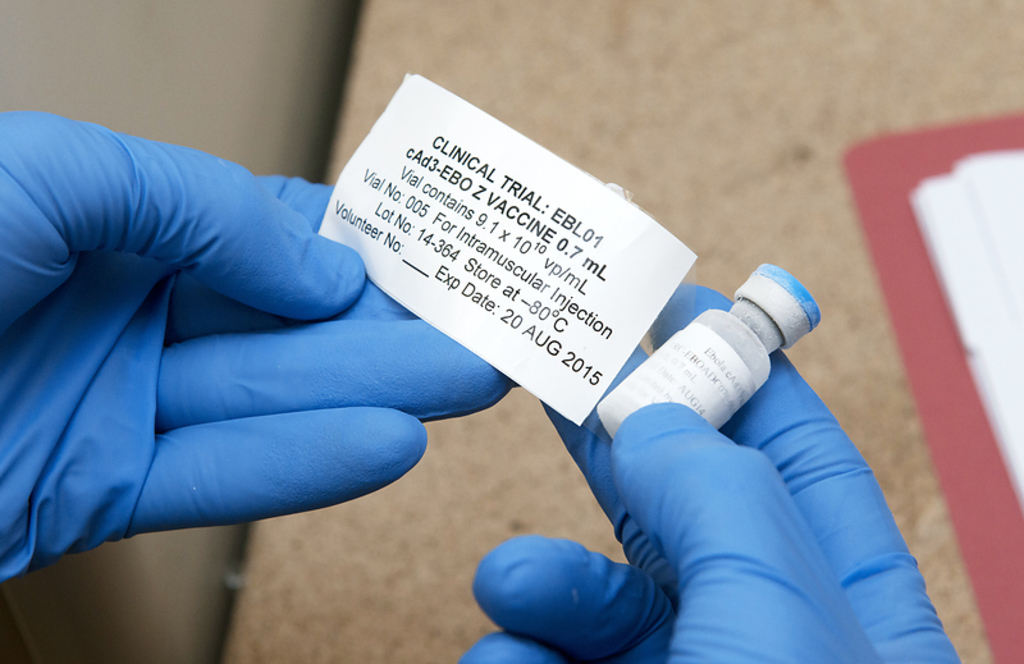By C. Chung and E. Kinman, with assistance by E. Averbuch, J. Rose and C. Portis
How does Ebola compare to COVID-19?

What are the symptoms of infection? How is infection diagnosed?

Symptoms of Ebola include hemorrhagic fevers, rash (specifically discolored elevations of skin), nausea, vomiting, diarrhea, pink eye, sore throat, spontaneous bleeding within the gastrointestinal tract, and through bodily holes or injection sites. Another common symptom includes blood clots inside of blood vessels, which may lead to bleeding in other areas. Ebola can also result in death, primarily caused by hemorrhage, shock, and kidney failure. Unlike most survivors of ordinary viruses such as the common flu, Ebola survivors experience survivor symptoms. These symptoms include difficulties with vision (potentially blindness), headaches, severe muscle and joint pain, and fatigue.
Although symptoms of Ebola are fairly apparent, diagnosing the virus can be difficult, as Ebola’s symptoms are similar to those of Malaria, some types of Influenza, Typhoid Fever, Lassa Fever, and Meningitis. Nevertheless, in order to diagnose patients, medical professionals run blood tests and search for elevated liver enzymes and low platelet and white blood cell counts.
Source: Britannica
How does the virus spread? How is it contracted?
EVD can be contracted through direct contact with the bodily fluids, organs, or materials that an infected person has come in contact with. Ebola is a zoonotic disease that originated from the fruit bat, but can be passed to other carriers such as primates, insects, and rats, as well as from human to human.
Source: WHO
What is the mortality rate? Has this changed over time? Does it differ depending on age, sex, or other factors?
Generally, the mortality rate for EVD is 50%, but varies from 25-90% depending on the severity of the outbreak. The severity of the outbreak depends upon the population concentration and the mode of transmission.
These mortality rates are applicable to all population groups, as the disease does not seem to infect any one group more than another. EVD’s high mortality rates have yet to decrease by vaccines such as ZMapp and V920 (discussed below). These vaccines were introduced in different outbreaks and had varying effectiveness. V920 has been the most successful for mitigating the virus. They were created post-exposure because they could not predict a vaccine for EVD before the outbreak.
Source: WHO
How can Ebola best be avoided?
The most effective way to prevent the spread of EVD is handwashing along with other standard sanitary practices. Other preventative measures include practicing safe burials, avoiding bush meat, and avoiding contact with people that have Ebola.
Source: Britannica
The most effective way to prevent the spread of EVD is handwashing along with other standard sanitary practices.
What treatments are available? How has this changed?

Source: Britannica
In the early days of the 2014 Ebola outbreak, supportive care was considered to be the only treatment for the virus. If a patient could afford it, they would receive blood and or plasma transfusions from a survivor of Ebola, in hopes of building up the body’s immunity to Ebola Virus Disease (EVD). However, this is an expensive process, so those who could not afford it had their fluids and electrolytes balanced either orally or intravenously. Later, in the 2014-2016 outbreak of Ebola, ZMapp was developed. ZMapp is a drug, which is a mixture of 3 antibodies that latch onto the glycoproteins of the Ebola virus. It was successfully tested on a monkey, but when given to Ebola patients, the effectiveness was debatable. Though ZMapp was not effective, in 2015, a vaccine by the name of rVSV-ZEBOV or V920 was proven to be highly successful. V920 is based in VSV, which is a virus with similar glycoproteins to EBOV (Ebolavirus), so this aids in the effectiveness of the vaccine. The success of the vaccine was demonstrated in a trial in 2015, where ring vaccination protocol was implemented. Ring vaccination protocol involves only vaccinating those who are most susceptible to the virus. In this trial, V920 was determined to be highly preventative against EVD.
Source: CDC
How does COVID-19 compare to Ebola?
COVID-19 is spreading quickly, much more quickly that Ebola did in the 2014 outbreak, for example. But the mortality rate is also much lower. Ebola’s mortality rate is around 50%, while estimates for mortality from COVID-19 tend to fall around 2-4%.